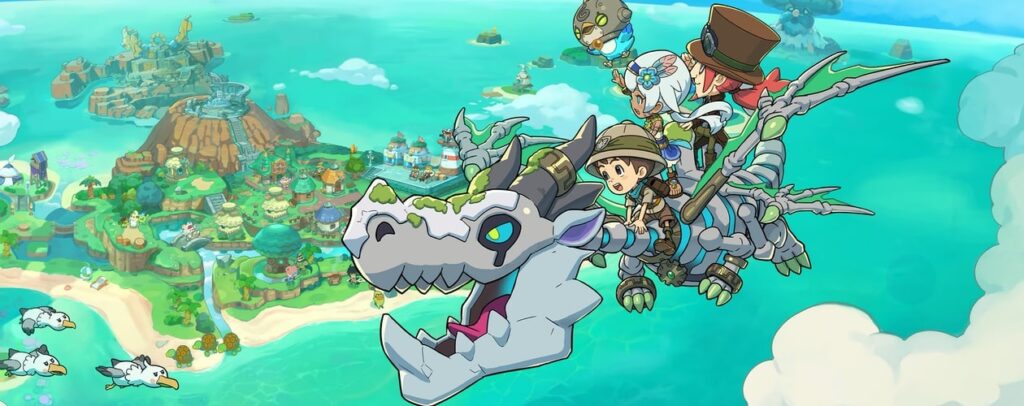I never played the original Fantasy Life on the Nintendo 3DS, so I jumped into Fantasy Life i: The Girl Who Steals Time completely unaware of what I would be signing up for. As my customised character was tossed through a time portal to an ancient island, I gradually found my feet, settling into a quaint life-sim fuelled by a choice from over a dozen job-altering Life selections. This was plenty interesting, but by the time I got used to that loop, I was whisked through another portal and dropped onto an entire other island where the entire ebb and flow of the game completely changed.
From a life sim, the game first morphed into a sort of top-down Breath of the Wild style adventure through a massive map full of dungeons and monsters. And then two more times, the game pulls a rug out from under you that you didn’t even realise was there, layering in Animal Crossing style town and home customisation, before also adding a massive helping of roguelite dungeon crawling for good measure.

Many games struggle to make just one of these concepts work as a full experience – but Fantasy Life i: The Girl Who Steals Time manages to pack all of these together into an endlessly addictive sprawl of life simulation and RPG adventure that is bursting at the seams with exciting stuff to do.
As the dust settles, and you finally get to the core of what Fantasy Life i: The Girl Who Steals Time is, you’re given access to multiple maps that each house various NPCs, bosses, resources, gathering spots, fishing hubs, and more. You’re thrust into a sprawling story of time travel and fantastical adventuring that guides you across these various lands, but I quickly found all my own personal motivations for exploration and adventure.
The biggest of these were my Lives – unique character classes across a spectrum of fighting, crafting, and gathering that let you perform different actions depending on which Life you equip. I started out as a Blacksmith, but soon needed ore to craft a new sword. Swapping to the Miner Life let me gather that ore myself, and once the sword was made, I could become a Paladin and use it to fight off monsters, gathering their parts to use as an Alchemist to brew potions, and on and on down an endless web of activities. Each Life has unique quests, a sprawling skill tree, and special gear to gather.
At times, the grind to advance these Lives or create a particularly rare item can be a little exhausting on your own. As you fight bosses and explore dungeons, though, you’ll rescue characters who can become members of your party and help you fight, gather, fish, and more. I loved this system, but I do wish the companion characters were a bit more interactive. Fantasy Life i: The Girl Who Steals Time skews so far tonally toward Stardew Valley or Animal Crossing that you’d expect to be able to bond with or even romance these characters, but they’re mostly there to act as extra bodies in your quest for experience and items.
Fantasy Life i: The Girl Who Steals Time sometimes apes the homework of Animal Crossing and Breath of the Wild a little too directly, but when you wander into the ever-changing roguelike dungeon, it’s unlike anything else out there. Each room of the dungeon, rather than simply tasking you to fight a daunting boss or horde of enemies, will require you to accomplish various Life-related tasks before your time-limit of exploration hits. One room might trap you in a fishing tug-of-war with a massive underwater beast, while another has you racing to gather every vegetable. There are proper battles mixed in as well, but the way these zones re-contextualise your tranquil Life activities into tense and speedy challenges is such a delight.
I only wish it was more rewarding to experience these delights with friends. Fantasy Life i: The Girl Who Steals Time supports multiplayer, but your activities are limited not just in scope, but in time as well. You aren’t able to fully progress quests together or do anything in your custom settlement besides look around. If you decide to go into the open world together to gather materials and fight bosses, you’re forced to end the session after just 30 minutes. This is a game where co-op progress is constantly gated or held up, making it impossible to lose hours with a loved one the way you can lose that time by yourself.
